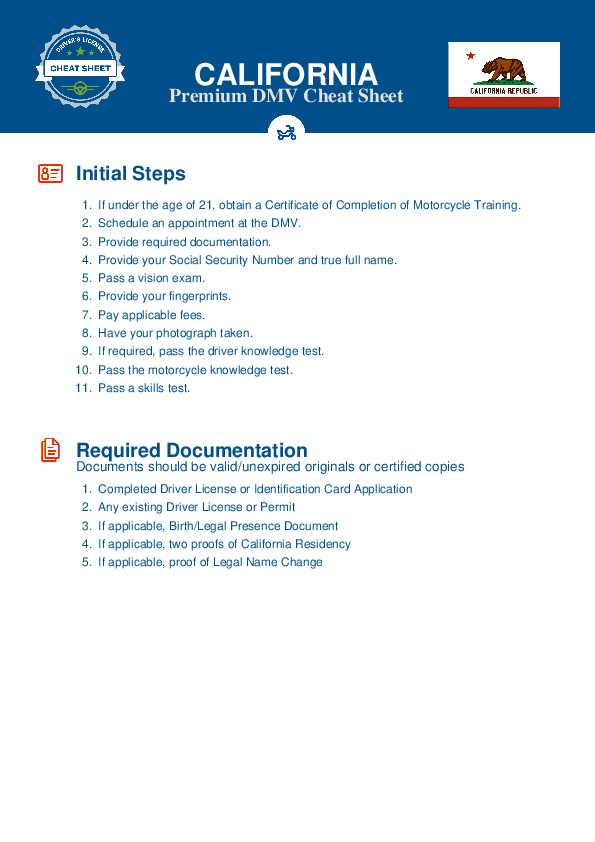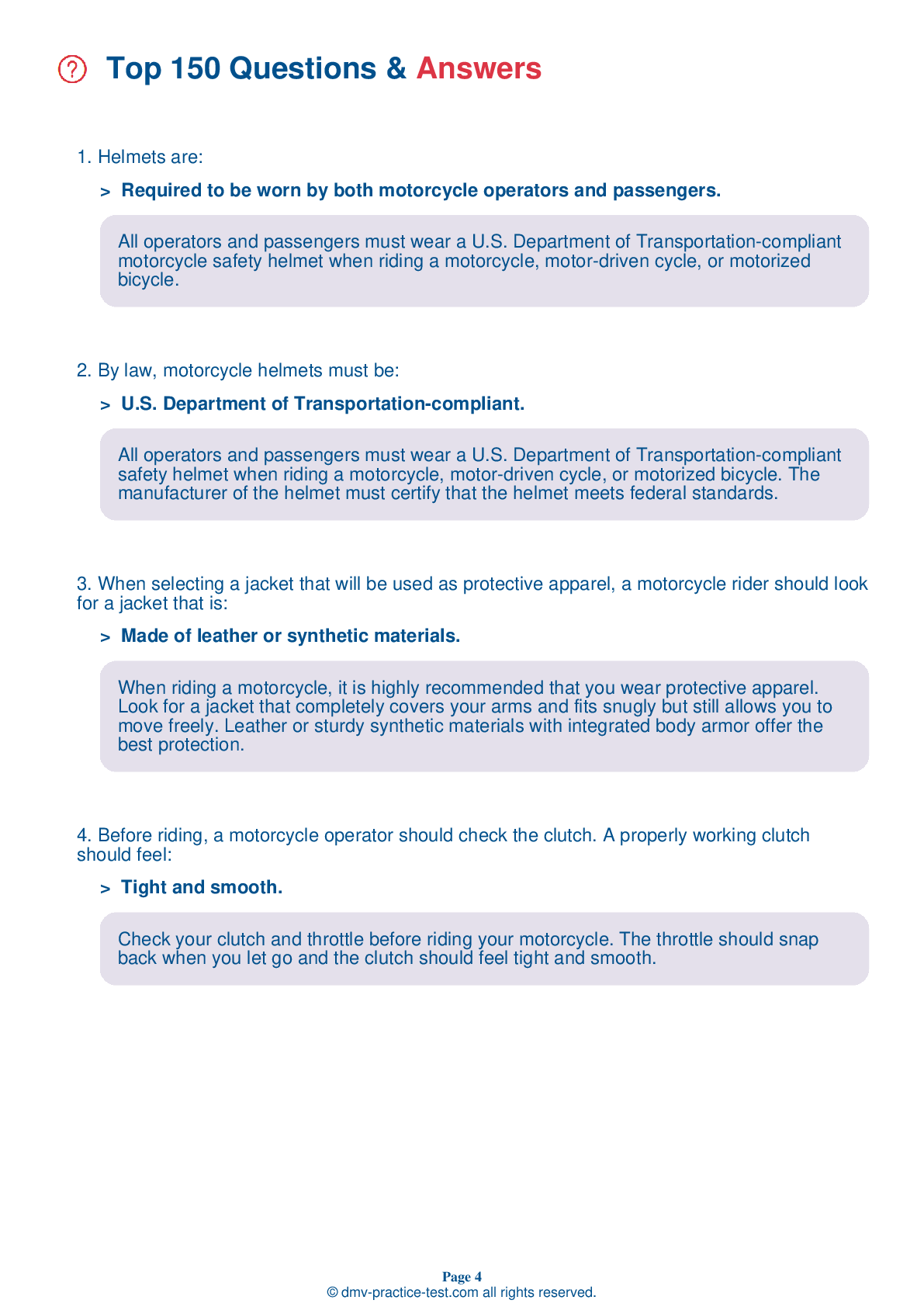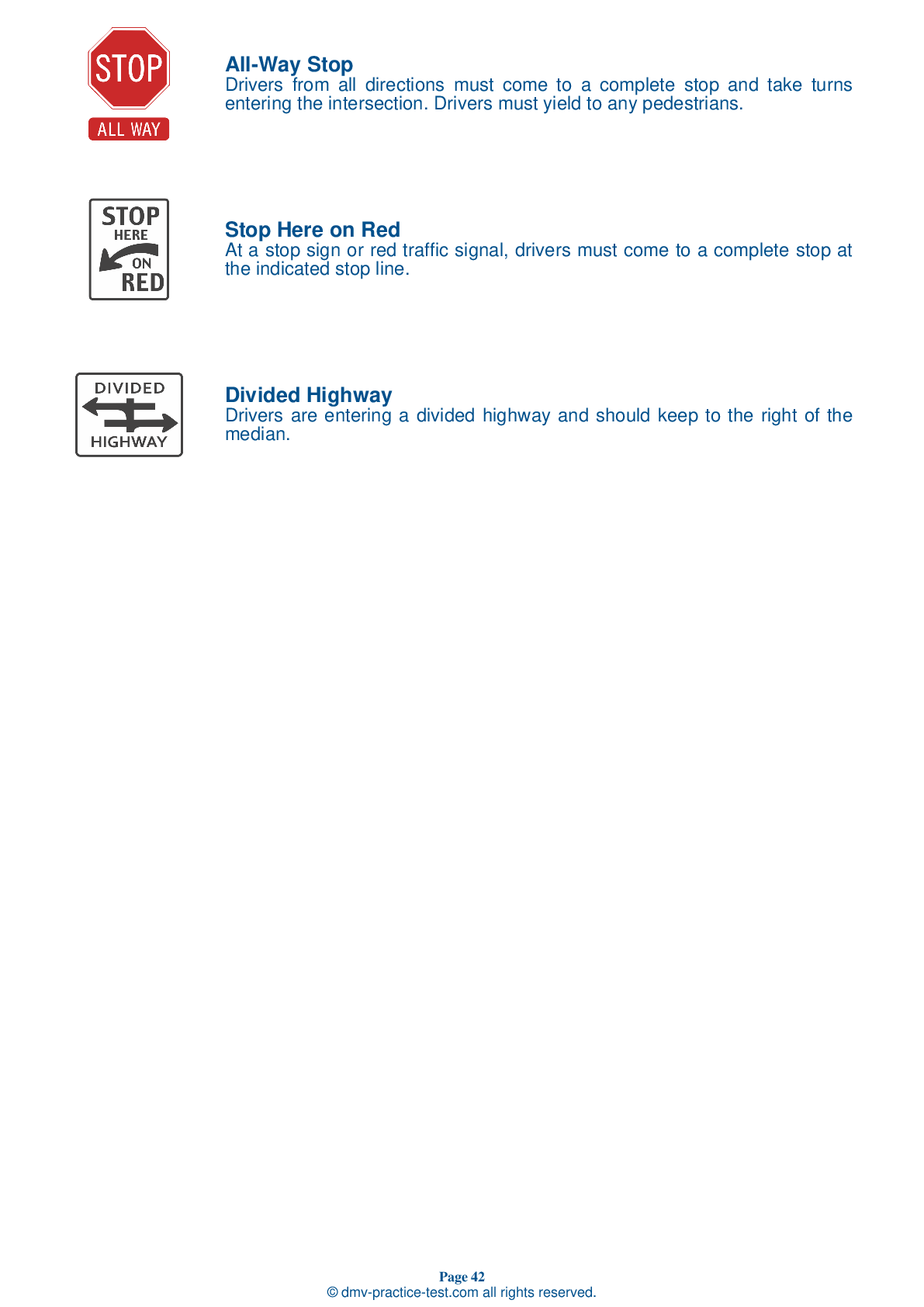Motorcycle Test | License CA 2025 | FREE Online Practice! #12 Page 2 of 4
Take this FREE motorcycle test (license in CA 2025) to check your knowledge of the road rules. To improve your results, download a motorcycle handbook online, study theory, and practice for free on our website. Still worried about how to get a motorcycle license in California in 2025? Check our website for more sample tests, train as much as possible, and boost your grades!
9 . Your knees should be:
Keep your knees against the gas tank to help with your balance as you turn the motorcycle.
10 . When scanning the area around your motorcycle, you should:
While searching the road for potential hazards, focus on looking for escape routes in or around intersections, shopping areas, schools, and construction zones.
11 . While riding, you should wear:
Long-term exposure to engine and wind noise while riding can lead to hearing damage, even if you wear a full-face helmet. Using hearing protection is advised to prevent damage.
12 . A pre-ride inspection should include all of the following, except:
When inspecting your motorcycle before a ride, be sure to check the tires, controls, lights, signals, mirrors, brakes, oil, fluids, chassis, and stands.
13 . A motorcycle’s horn is ________ a passenger vehicle's horn.
A motorcycle's horn is not as loud as the horns of other vehicles. Motorcyclists should use their horns where appropriate but should not rely on their horns to keep them safe.
14 . The first thing you should do if your throttle becomes stuck is:
If your throttle becomes stuck, try twisting it back and forth several times. If this does not free your throttle, immediately operate the engine cut-off switch and pull in the clutch at the same time.
16 . To operate a moped, you must have at least a _____ license.
A Class M2 license allows you to operate a motorized bicycle, moped, or motorized scooter. A Class M1 license allows you to operate all of these, as well as any two-wheel motorcycle or motor-driven cycle. A Class C license allows you to operate a motorcycle with a side car attached, a three-wheel motorcycle, or a motorized scooter.
See the exact questions that will be on the 2025 California DMV exam.
99.2% of people who use the cheat sheet pass the FIRST TIME
Jeneen was tired of paying $5/gallon. She got herself a scooter that required the motorcycle license. She studyed the motorcycle test cheat sheet and passed her test the next day!
Christopher tells us how he knew nothing prior to obtaining the motorcycle study guide, and he only got one question wrong because he clicked on the wrong answer by mistake.



